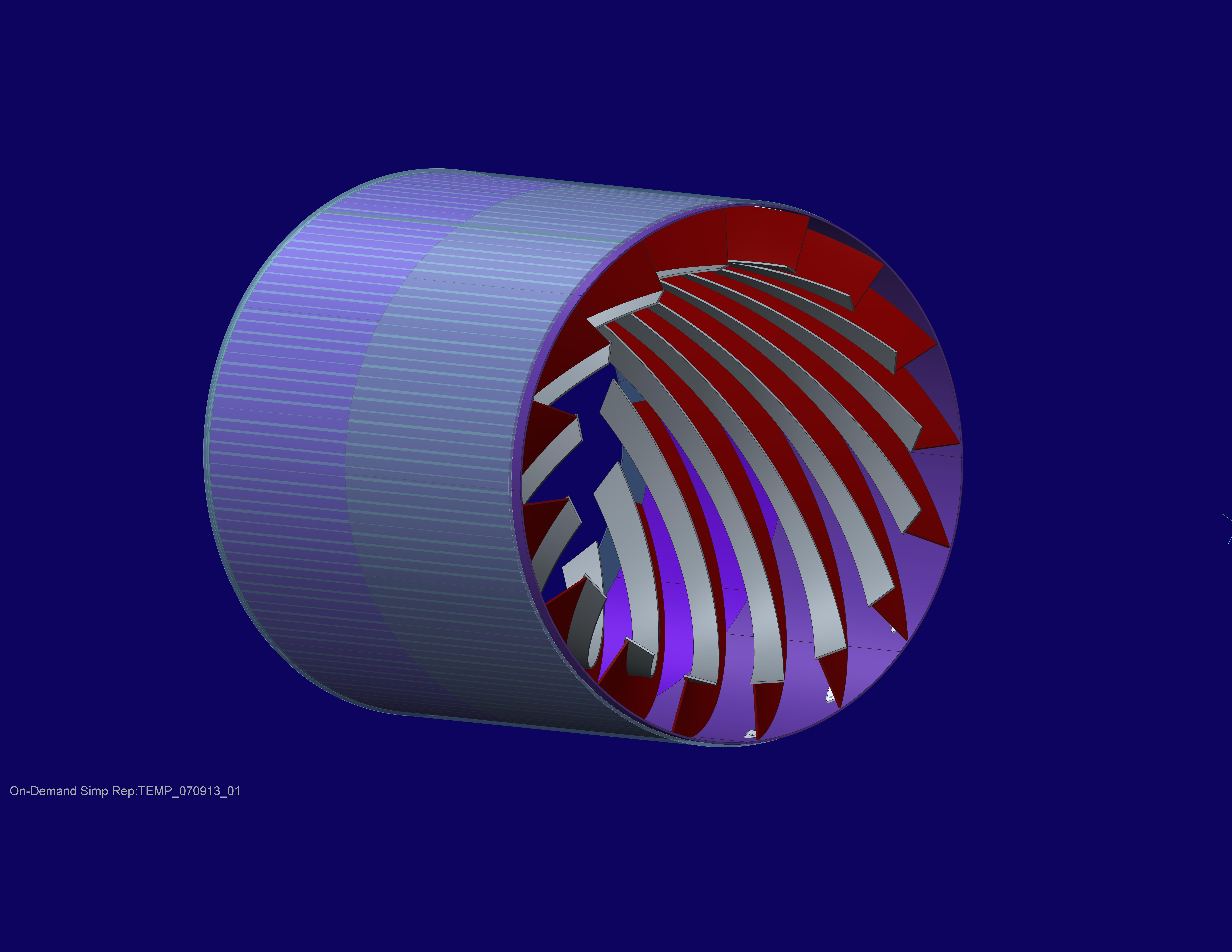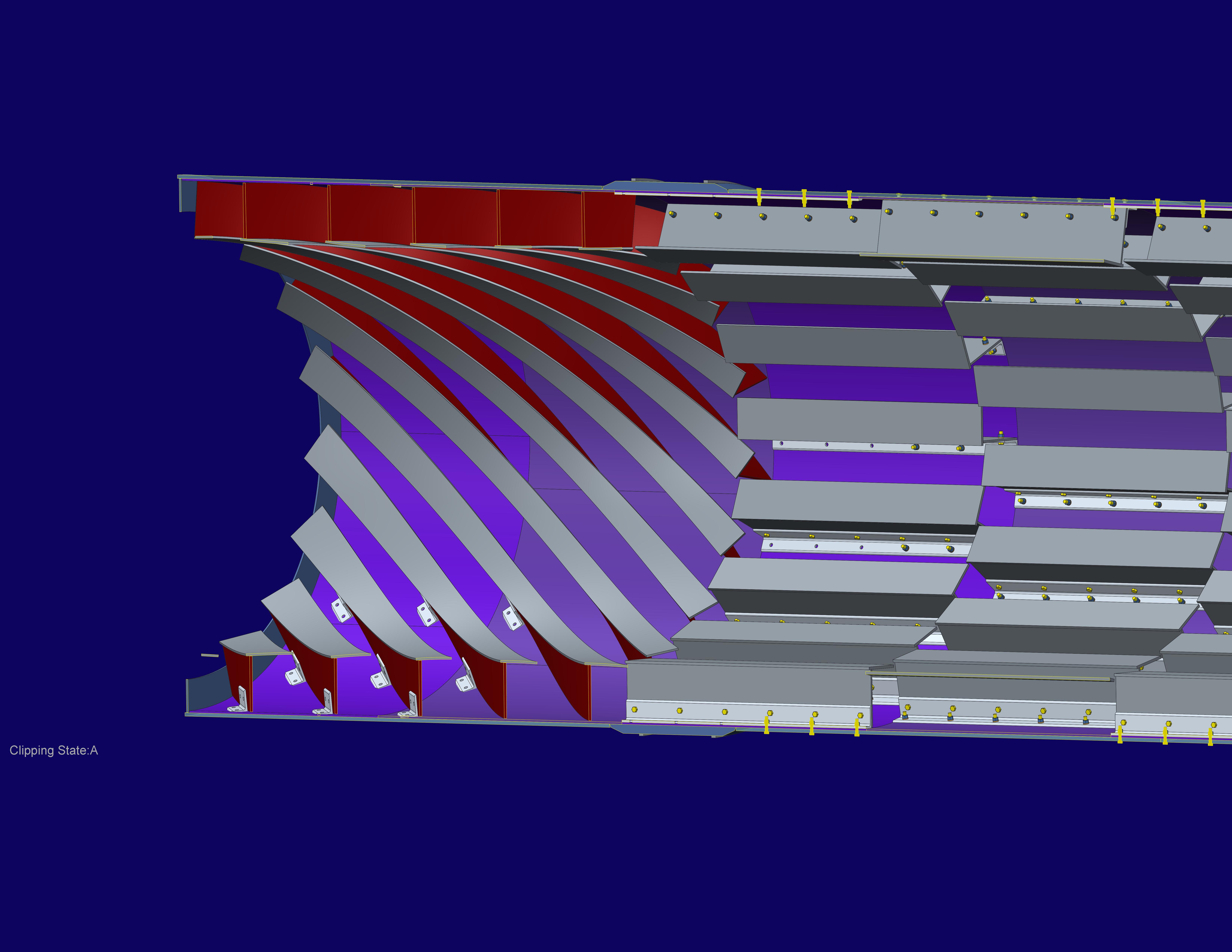Community Tip - New to the community? Learn how to post a question and get help from PTC and industry experts! X
- Community
- Creo+ and Creo Parametric
- 3D Part & Assembly Design
- Re: Can't flatten a helical swept wall
- Subscribe to RSS Feed
- Mark Topic as New
- Mark Topic as Read
- Float this Topic for Current User
- Bookmark
- Subscribe
- Mute
- Printer Friendly Page
Can't flatten a helical swept wall
- Mark as New
- Bookmark
- Subscribe
- Mute
- Subscribe to RSS Feed
- Permalink
- Notify Moderator
Can't flatten a helical swept wall
This is probably elementary for most of you, but I'm working on a large dryer unit that has feed lifter blades on one end. I have managed to create the parts using a helical sweep (for the vertical leg) and a swept protrusion using an edge of the vertical leg (for the horizontal top plate) both in sheetmetal mode, however, I can't get them to flatten out now. Any ideas? The I.D. that the vertical wall attaches to is 95" and the travel down the drum is 8' at 45 degrees. The vertical leg is 10" x 3/8 THK. AR400 and the top plate is 6" x 3/8 THK AR400.
**** ADDER**** The vertical leg must be normal to the surface of the drum at all points along the curve and the top plate is normal to the vertical (obviously).


This thread is inactive and closed by the PTC Community Management Team. If you would like to provide a reply and re-open this thread, please notify the moderator and reference the thread. You may also use "Start a topic" button to ask a new question. Please be sure to include what version of the PTC product you are using so another community member knowledgeable about your version may be able to assist.
Solved! Go to Solution.
- Labels:
-
General
Accepted Solutions
- Mark as New
- Bookmark
- Subscribe
- Mute
- Subscribe to RSS Feed
- Permalink
- Notify Moderator
Frank is right, there are a lot of scenarios where you can no longer unfold sheetmetal.
I don't know how accurate you need these, but I might suggest offsetting the surface (distance 0) (in solid modeling) and flattening the quilt. It has some pretty good options for projection options. It will give you a relatively accurate flat pattern.
- Mark as New
- Bookmark
- Subscribe
- Mute
- Subscribe to RSS Feed
- Permalink
- Notify Moderator
Ahhh, geometrically, a helical surface is not a "ruled surface", and thus is not developable, or able to be "flattened".
- Mark as New
- Bookmark
- Subscribe
- Mute
- Subscribe to RSS Feed
- Permalink
- Notify Moderator
Frank is right, there are a lot of scenarios where you can no longer unfold sheetmetal.
I don't know how accurate you need these, but I might suggest offsetting the surface (distance 0) (in solid modeling) and flattening the quilt. It has some pretty good options for projection options. It will give you a relatively accurate flat pattern.
- Mark as New
- Bookmark
- Subscribe
- Mute
- Subscribe to RSS Feed
- Permalink
- Notify Moderator
Hello Darrin,
I am from PTC Technical Support and noticed this thread is still marked as Not Answered.
The responses you got are all correct and good advices (use flatten quilt as helical surfaces cannot be unbend)
Did they help you?
A little more information on requirements and limitations for flattening geometry can be found here:
http://www.ptc.com/appserver/cs/view/solution.jsp?n=CS125425





